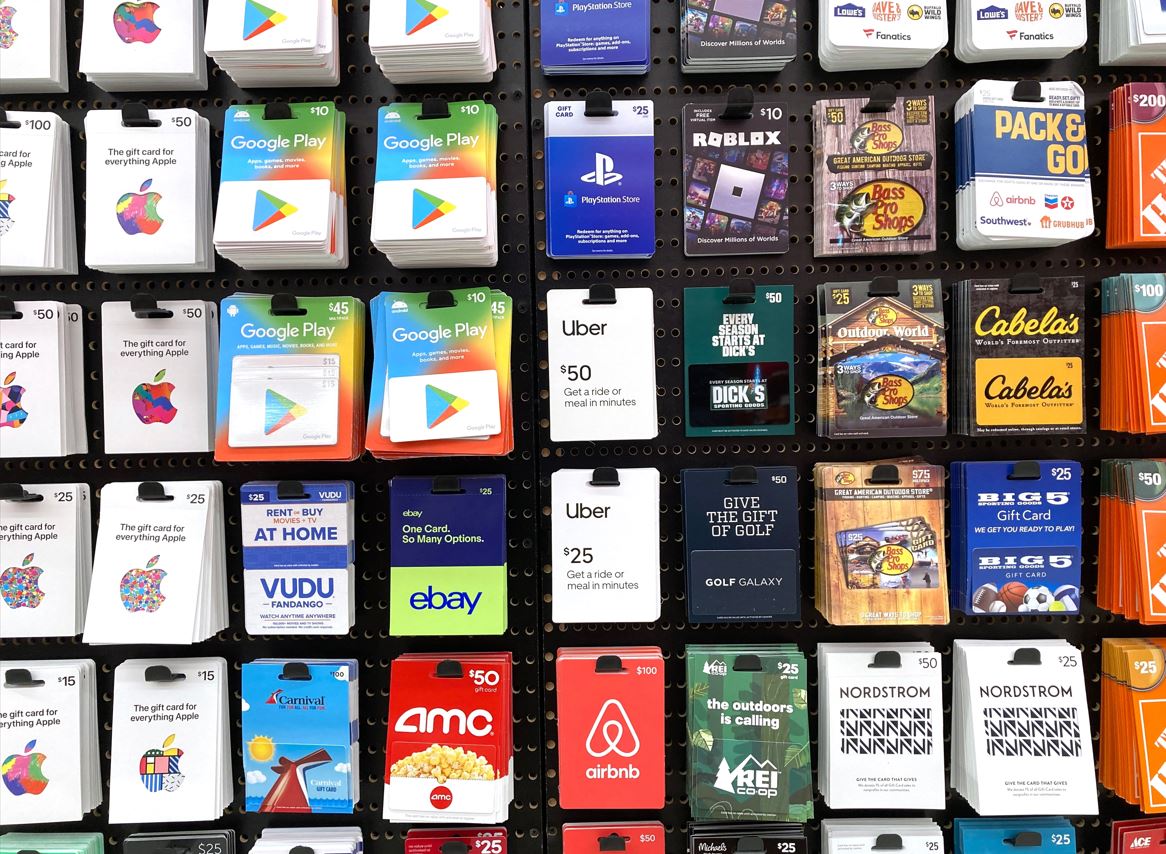Why are scams rising?
Gift cards are sold like products but used like money, and unlike cash in a wallet or funds in a bank, they lack strong protections. The growth of digital shopping, self-service checkouts, and emailed codes means fewer staff safeguards and more systems for criminals to exploit.
Why criminals love gift cards
They’re low risk, high reward. Unlike bank cards, gift cards are almost impossible to trace and typically have weak fraud protections.
How scams work
In stores: criminals scratch off PINs, swap barcodes, or reseal packaging so buyers unknowingly fund their cards.
Online: bots attack balance-check portals, cycling through card/PIN combinations until they find valid ones.
Practical steps for consumers
- Buy safely: only from official stores or websites, ideally behind the counter.
- Inspect and act quickly: check packaging, use cards soon after purchase, and keep receipts.
- Spot scams: if someone asks you to pay a debt, fee, or fine with a gift card, it’s always a scam.
- Stay alert: never share gift card details by phone, email, or text.
What retailers should do
Staff training
- Teach cashiers to spot tampered cards or suspicious bulk purchases.
Tamper-proof packaging
- Make it obvious if a card has been opened or altered.
Stronger tech protections
- Add CAPTCHAs and rate limits on balance-check systems so bots can’t guess numbers.
Consumer protection policies
- Be more willing to refund or replace cards when fraud is clearly proven.
Require registration
- Cards should only become spendable after being registered with a unique receipt code. That way, just knowing the card number and PIN won’t be enough for criminals.
The role of government and regulators
Set security standards
- Just like PCI DSS (Payment Card Industry Data Security Standard) rules for bank cards, introduce minimum protections for gift cards (e.g., tamper-proof packaging, stronger PINs, secure balance-check portals).
Mandate consumer rights
- Require retailers to refund or replace balances where fraud is proven, instead of leaving consumers with no protection.
Oversight and enforcement
- Regulators like the FCA (Financial Conduct Authority, in the UK) could audit retailers’ systems and penalise those who don’t secure their gift card platforms.
Public awareness campaigns
- Run national campaigns (like those for phishing or online fraud) to warn consumers that gift cards are a top target for scammers.
Data sharing
- Encourage retailers, banks, and law enforcement to share intelligence on gift card fraud patterns, so scams can be spotted and stopped faster.
Right now, gift cards fall through the cracks: sold like products, but used like money. The government could change that by setting standards and making sure consumers get the same protection as they do with bank cards.
Dr Hannan Azhar is Senior Lecturer in Computing, AI and Cyber Security in the School of Sciences, Psychology, Arts and Humanities, Computing, Engineering and Sports.
 Expert comment
Expert comment Emma Grafton-Williams
Emma Grafton-Williams 10611
10611


